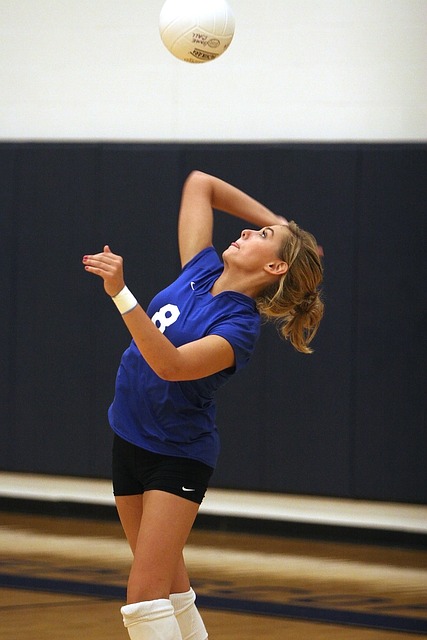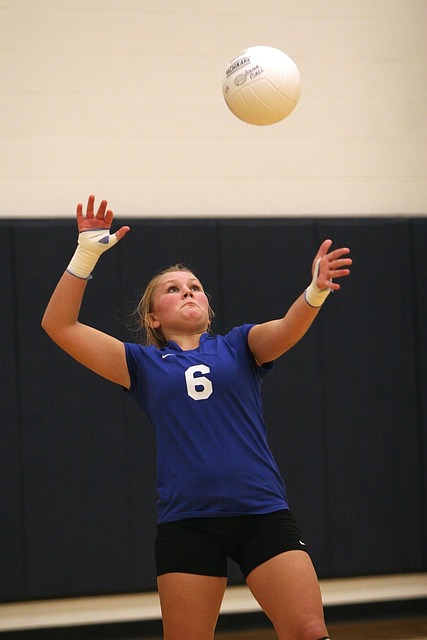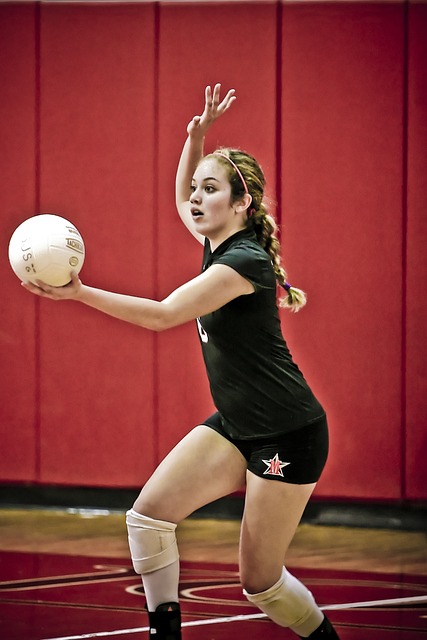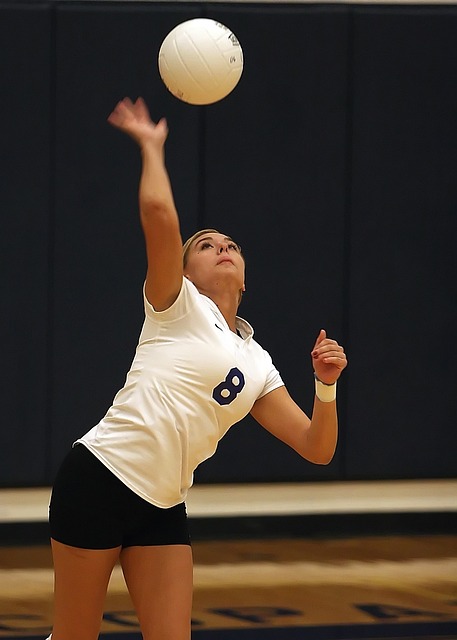Introduction
Ever watched a volleyball game and heard the term “ace” thrown around? If you’re scratching your head wondering what it means, you’re not alone. It’s actually pretty straightforward, but let’s break it down in the simplest way possible. Think of it as your ultimate guide to understanding one of the coolest moves in volleyball. Ready to dive in? Let’s go!
What is an Ace in Volleyball?
An ace in volleyball is when a player serves the ball so well that it lands in the other team’s court without anyone touching it. Basically, it’s a serve that gets the serving team a point right away without the other team being able to hit it back. Getting an ace not only adds to the serving team’s score but also shows how good the server is at serving accurately.
Now that you know what is an ace in volleyball, let’s learn some advanced techniques to help you score more Aces.
Advanced Serving Techniques For Scoring An Ace
1. Float Serve
A float serve in volleyball is when the ball is hit without much spin, so it wobbles around as it moves through the air. Instead of spinning the ball like with other serves, it uses the air to make it move strangely. Because it’s so unpredictable, it’s tough for the other team to know where it’s going, making it harder to receive and pass.
Here’s a detailed breakdown of the float serve:
Technique
First, stand with your feet apart, facing the net. Hold the ball in one hand and get ready to hit it with the other. Toss the ball a bit ahead of your hitting hand. Then, when you hit it, just aim to make contact with the ball using your hand or fingertips. You don’t need to swing your arm hard or snap your wrist. It’s all about a smooth touch to make the ball float.
Minimal Spin
The special thing about a float serve is that the ball doesn’t spin. Instead of hitting it with a spinning motion, players try to hit it cleanly and directly, without adding any spin. Because there’s no spin, the ball kind of flutters or “floats” as it flies through the air. This makes it hard for the other team to guess where it’s going to go.

Aerodynamics
A float serve moves mostly because of how air works around the ball. As the ball goes through the air, it mixes with the air around it, making the ball’s path change a little. It might dip, swerve, or go a different way unexpectedly. This makes it tricky for the person receiving the serve to figure out where the ball is going.
Difficulty in Reception
Float serves are tough for the team receiving them. Unlike spins serves, which have a more predictable path because of the spin, float serves can be all over the place, which makes them tricky to handle. Receivers need to keep a close eye on how the ball moves and adjust how they stand and hit it to pass it cleanly to their setter.
Strategic Advantage
Float serves are like a secret weapon for players when they serve, especially if they use them smartly. A good float serve can mess up the other team’s plans by making it hard for them to pass and set the ball. It can even throw them off balance, making it tough for them to set up good attacks. This gives the serving team an upper hand in the game.
2. Topspin Serve
A topspin serve is different from a float serve because it makes the ball spin forward. This makes the ball dip fast toward the end of its path. This sudden drop can surprise the other team, making it hard for them to pass or return the serve, sometimes leading to an ace.
Here’s a detailed breakdown of the topspin serve and how it’s executed:
Grip and Stance
First, you grab the ball with your non-dominant hand (if you’re right-handed, that’s your left hand, and vice versa) and hold it with your fingertips. Then, you put your dominant hand underneath the ball to support it. Next, stand at the serving line with your feet about shoulder-width apart, facing where you want the ball to go.
Toss
The server throws the ball up high enough to take a full swing but not too high that it’s hard to control. The toss should be a little bit in front of the server and just to the side of their dominant hand.
Contact Point
When the ball reaches its highest point, the server hits the bottom half of the ball with the heel of their hand. This hitting action creates the topspin effect. It’s important to make clean contact and snap your wrist to add as much spin as possible.
Follow-through
After hitting the ball, the server’s arm should stretch out completely, and the wrist should snap downwards. This movement helps the ball get the topspin you want. The follow-through should be smooth and controlled, with the server ending up balanced and ready to defend or move to the next play.

Ball Trajectory
The topspin makes the ball drop quickly as it gets near the other team’s court. This makes it hard for them to figure out where the ball is going. It might also drop faster than they think, which could lead to them making a mistake.
Variations
There are different types of topspin serves, like the jump serve and the float serve. The jump serve adds extra power and momentum by jumping while serving. On the other hand, the float serve doesn’t have much spin and is all about making the ball move unpredictably in the air.
Strategic Considerations
The topspin serve can be really useful if you use it smartly. Servers can aim for certain spots on the other team’s court, like the corners or the spaces between players, to find weaknesses in their defense. Also, changing up how fast the ball goes, how much it spins, and where it goes can keep the other team guessing and off balance.
3. Jump Serve
A jump serve happens when the server jumps before hitting the ball, giving them more power and momentum for the serve. The extra speed from the jump
Here’s a detailed breakdown of the jump serve:
Preparation
Before you execute a jump serve, you need to position yourself behind the end line of the court. Typically, you take a few steps back to build momentum for the jump.
Footwork
When you’re doing a jump serve, your footwork is crucial for building power and momentum. You usually begin with a small step forward using your non-dominant foot, then follow it up with a bigger step using your dominant foot. This helps you gather momentum for the jump.
Jump
As you approach the ball, you explode upward with a strong jump. The aim is to time your jump so that you reach the highest point just as you hit the ball.
Contact
At the highest point of your jump, you hit the ball with your dominant hand. Where you make contact is really important because it decides how the serve will go. The best spot to hit is just above your head and a bit in front of your body.
Arm Swing
The arm swing is crucial for a jump serve. As you jump, you pull your dominant arm back to build momentum, then swing it forward strongly to hit the ball. This whipping action gives extra power to the serve.
Ball Placement
Depending on your strategy and skill, you can aim the jump serve at different parts of the other team’s court. Some players target specific areas to find weaknesses in the defense, while others go for powerful serves deep into the court that are hard to handle.
Spin
To make your serve more complicated and harder to predict, you can put spin on the ball. Topspin is a good option because it makes the ball drop quickly after it crosses the net, making it difficult for the other team to pass accurately.
Follow-through
Once you make contact with the ball, follow through with your swing, extending your arm fully. This will help you maintain control and accuracy while also maximizing the power of your serve.
Landing
After you finish the serve, land back on the ground and swiftly move into a defensive position to get ready for the other team’s response.
Variations
There are different types of jump serves, like the topspin jump serve, the float jump serve, and the hybrid jump serve. Each type has its own special traits and benefits, suiting different styles of play and situations.

Ace Preventing Techniques
Preventing aces is crucial for maintaining control and momentum during a match. Here are several strategies to help prevent aces in volleyball:
Effective Passing Technique
To receive serves well, you need to have good passing technique. Make sure you get into position fast, keep your arms steady, and aim towards where you want the ball to go. By getting these basics right, you’ll be better at receiving serves and avoiding aces.
Communication and Court Awareness
Clear communication with your teammates is really important for covering the court well and knowing where the serves are going. Make sure you tell each other what type of serve is coming and where it’s headed so you can react properly. Also, pay attention to the court so you can position yourselves smartly and cover any open spots, which helps stop aces.
Adaptability to Serve Variations
Servers can use different kinds of serves like topspin, float, and jump serves, each making the ball move in its own way. It’s important for your team to practice handling all these different kinds of serves. Learning how to adjust your passing for each type of serve can help you stop aces from happening.
Targeting Weaknesses in the Serving Team
Watching and finding weaknesses in the serving team’s plan can help you find chances to use their mistakes and stop aces. For instance, if a server keeps missing or serves to certain spots on the court, you can change where you stand and how you defend to deal with it better.
Strategic Timeouts
Coaches might use timeouts smartly to break the rhythm of the other team’s servers, especially if they’re scoring a lot. Taking a break lets your team refocus, change tactics, and maybe stop the server from getting more points in a row.
Maintaining Mental Toughness
Aces can make the receiving team feel unsure. It’s important for you to stay mentally strong and tough, especially after the other team scores with a serve. Keep your focus, stay positive, and stay calm. This helps you bounce back fast and keep playing well, so aces don’t affect the game too much.
Continuous Improvement and Practice
To get better at passing accurately, you need to practice regularly. Spending time on specific drills and exercises will help improve your serve-receiving skills. By always working on your techniques, you can become better at stopping aces and staying in control during games.
Conclusion
What is an Ace in Volleyball? Understanding what an “ace” means in volleyball helps you grasp the importance of serving well and how it affects the game. Whether you’re doing a float serve, topspin serve, or jump serve, each type has its own advantages and challenges. Being able to serve accurately and coming up with smart ways to prevent aces shows how dynamic volleyball is. By practicing your serving skills and learning how to handle different types of serves, you can improve your game and play a bigger role in your team’s success. Keep practicing and you’ll keep getting better!
Is an ace 2 points in volleyball?
No, an ace in volleyball does not equate to 2 points; rather, it earns the serving team a single point without the need for the opposing team to touch the ball.
Is the ace a real thing in volleyball?
Yes, an ace is a legitimate term in volleyball, referring to a serve that directly results in a point for the serving team due to the inability of the receiving team to successfully return the ball.
How many points is an ace in volleyball?
In volleyball, an ace typically awards the serving team one point, contributing to their overall score in the game.
